Ecofiction in the Land of Enchantment
A conversation between Lauren C. Teffeau and Sarena Ulibarri
Lauren C. Teffeau and Sarena Ulibarri are in a unique position. They are both speculative fiction writers who often tackle environmental themes in their stories and live in the same corner of New Mexico, colloquially known as the Land of Enchantment with its big open skies, varied terrain, and unique cultural history. They’ve been critiquing each other’s work for over ten years, cheering each other on through the ups and downs of publishing, and today, they’re in conversation here to talk about their work, writing climate fiction, and the futures they’d like to see.
Sarena Ulibarri (SU): Both of your books have environmental themes at their core, but Implanted was science fiction with a spy plot, whereas A Hunger With No Name takes place in a world that has suffered a shattering of their old technology. How does your approach to ecofiction differ when writing fantasy versus science fiction?
Lauren C. Teffeau (LCT): I’m not sure that they do differ. Arthur C. Clarke is credited with saying, “Any sufficiently advanced technology is indistinguishable from magic.” I’ve always enjoyed exploring that line between technology and magic in my work. Both my books explore how technology is used within a certain environmental context.
In Implanted, that context is humans escaping the drudgery of their daily lives by using highly sophisticated implants to communicate with each other after retreating to cramped domed cities after climate collapse. In A Hunger with No Name, civilization has entered another dark age, this time after societal collapse, and access to and understanding of the technology of the past is unevenly distributed, leading to conflicting approaches to utilizing the natural environment.
Those parameters are what I used to build out the world of each story, the belief systems of my characters, and the plot that results. Even though A Hunger with No Name is billed as fantasy, it is technically science fiction because any “magic” in that story is really the intersection of a low-tech society with a higher-tech one. Because that conflict is interpreted through the main character’s highly mythic worldview, the story has a fantastical texture, so much so, the book has a secondary world feel to it even though it’s very much grounded in our world and its problems, extrapolated out into the far future.
I also like to focus on the effects that societal or ecological collapse has on people and how they find ways to integrate that trauma, for lack of a better word, into their worldview to survive. In Implanted, the people turned to science and engineering solutions. In A Hunger with No Name, the people developed different philosophies and cultures to keep their communities going. That striving for a future, no matter how imperfect, is what I think is perhaps the most important element of the ecofiction I like to write and read.
LCT: Sarena, you’ve also published two books that address environmental themes in interesting ways. How did the approach you took in your solarpunk novella Another Life differ from your Nutcracker-inspired sci-fi story Steel Tree, and in what ways were they the same?
SU: Both of my books have a strong sense of place, but Another Life is set in Death Valley, California, whereas Steel Tree is set on a distant planet. I definitely took some liberties with the depiction of Death Valley, but I felt beholden to it as a real place. I tried to learn as much about the ecology of the area as I could, and the ways that human activities have affected the land. I learned a lot about the history of Hoover Dam and Lake Havasu, and watched documentaries about the anarchist community Slab City near the Salton Sea. Most of this research didn’t go directly into the book, but it informed the choices I made about how to depict life in this extreme setting.
In the same way that you said A Hunger With No Name is billed as fantasy but it’s really science fiction, Steel Tree gets billed as science fiction because it has robots and a space elevator, but it’s effectively secondary world fantasy. With it being set on a different planet, I wasn’t constrained by any real geography; I could shape the setting to fit the story. Instead, what I was beholden to in Steel Tree was the structure of The Nutcracker. As a retelling, I had to hit certain beats, make certain references. The power of retellings, in my opinion, is to answer the questions that the original leaves opaque, and to “update” the story in a way that rings true to real world concerns. The questions I had to ask of the story in order to place it into a science fiction context led me right to issues of colonialism, class struggle, and the ethics around food production. Agribusiness is a topic I return to over and over when writing ecofiction. It’s such a complex issue and has a huge environmental impact, yet it doesn’t get nearly the attention that energy production does.
SU: What’s something you learned early on in your writing career that still impacts your writing today?
LCT: There’s one thing I learned early on, and I keep relearning it as the years go by, and that is embracing the audacity to write in the first place. I spent too much time and energy early on thinking I couldn’t or shouldn’t be a writer, and, once I let go of that, I was able to accept that identity for myself and rapidly improve my craft. When I hit low points (which are inevitable in publishing), I have to remind myself of the audacity that propelled me into writing in the first place, which makes it all the easier to shake off doubts and get back to the work in question. I’ve cycled through enough of these periods to identify when they hit now, and I know I just have to keep writing, even when it’s hard.
I’ve also learned to embrace being audacious in the types of stories I tackle. Playing it safe has rarely worked for me in this business, so whenever I reach a point in a project where I’m worried the story has become too stale or boring, I ask myself what is the most audacious thing that can happen and still be true to my character or storyworld, and then make it happen. You can always dial back the crazy on the page, but it is much harder to inject energy into something that doesn’t have a spark in the first place.
LCT: What has been the most impactful part of your writing journey, and what was something you felt you had to do to become a writer that has ended up not being as meaningful?
SU: Being a writer has always been pretty integral to my identity, so I fell into the fallacy of believing I had to be an English major and get an MFA. I took that path not really anticipating the contrived divisions between “literary” and “genre,” and found that the types of stories I was drawn to were not really supported in the academic model. I strove to walk an acceptable line when I should have been pushing boundaries—finding that audacity you talked about!
The most impactful part of my writing journey has been the Clarion Workshop at UCSD. It reignited my passion for fantasy and science fiction, and helped me gain a much better understanding of both writing craft and the publishing industry. Clarion was also the first time I really understood writing as a community, not just a solitary art.
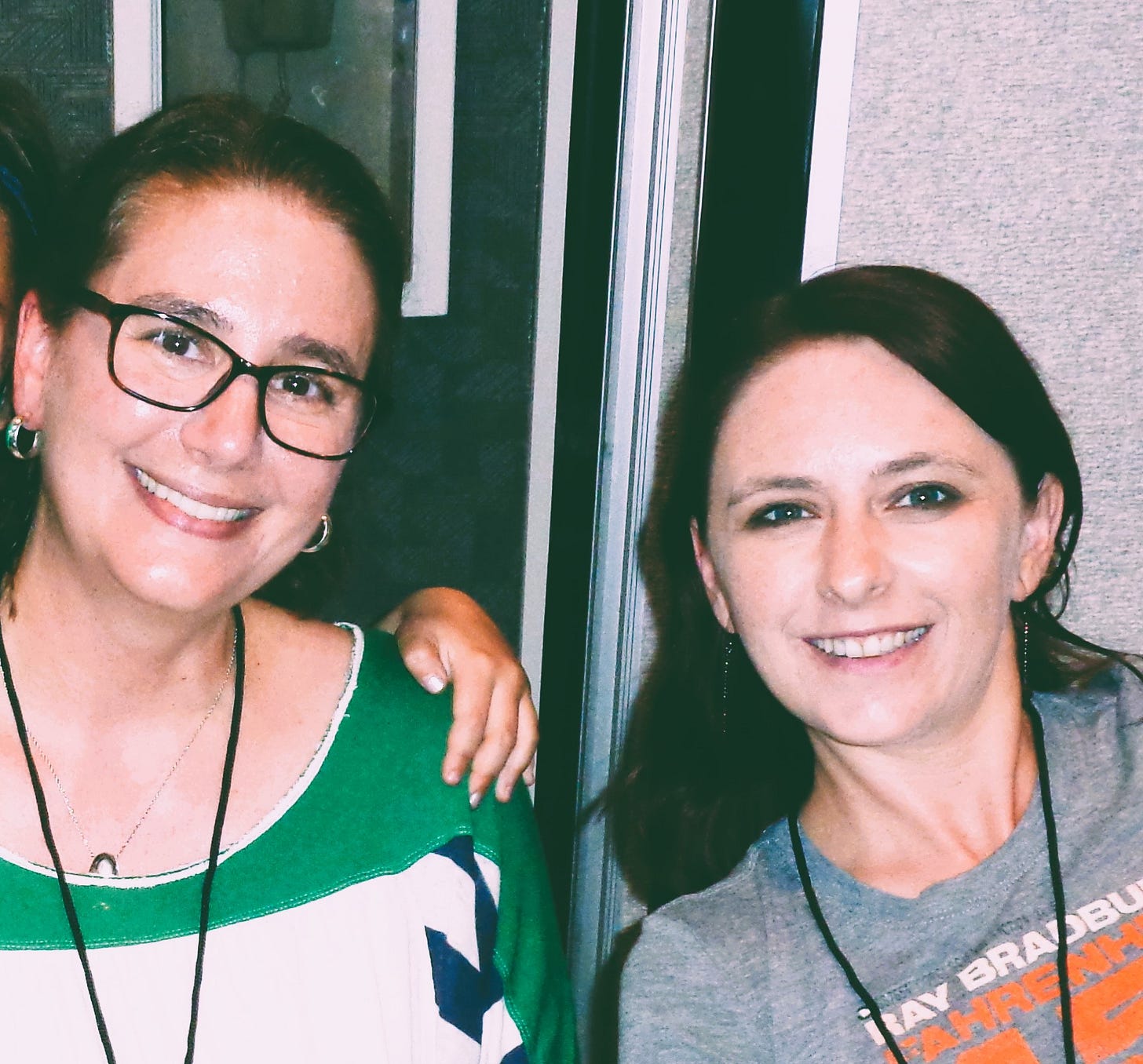
LCT: We’ve both written novellas or what is considered to be “short” novels in addition to short stories. Does your approach to short stories differ compared to your longer form work?
SU: I tend to think novellas have more in common with short stories than with novels. A good novella can be just the right mix of concise and meaty. Something you read quickly, but that stays with you for a long time. Short stories are like that too, but novellas offer more space to explore an idea or develop a thought experiment.
Another Life was originally a full-length novel, which I trimmed down by cutting out superfluous sub-plots and focusing on the main thread of the story I wanted to tell. Since I was rewriting it to submit to Stelliform Press, I also made decisions to emphasize a lot of the environmental threads that were a little more subdued when I was imagining the story more for a general science fiction audience. Steel Tree, on the other hand, was originally a short story that I needed to expand in order to develop the world and give the story space to breathe. The second half of The Nutcracker ballet doesn’t really have a plot, so I had a lot of freedom to shape the second half of the story into something original, and that quickly made it grow beyond the confines of a short story length. I’m usually an underwriter, so that was a little closer to my normal process.
SU: Did you plan “A Hunger With No Name” as a novella, or did it evolve into that length over multiple drafts?
LCT: Not at all! A Hunger with No Name started out oddly enough as a dream. I saw my main character Thurava staring off at something glimmering on the horizon. An intense feeling of dread and fascination accompanied that image, and, when I woke, I started writing about her life on a dying land and the inexorable reach of the Glass City winking in the distance. My first complete draft put it around 17,500 words, which is technically the upper limit for a long short story or novelette. But it didn’t sell, and I knew it was impossible to make it any shorter since I kept finding ways to flesh out the story even more by deepening the lore and heightening the emotion and action throughout. I tried expanding it into a novel, but the end result was still pretty short at around 70k, and I felt like I had diluted the main thrust of the story with subplots that I was just putting in there to up the word count. So I went back to the drawing board and accepted the fact that it was a novella–not too long, not too short, but just right. I got it to just under 40k (which is the upper word limit for novellas), and eventually A Hunger with No Name found a home at the University of Tampa Press. The team there did a great job with the story, and I’m so excited for it to find the readers it deserves.
SU: One of the risks of writing ecofiction can be coming across as too preachy. Has that been something you’ve bumped up against in your own writing? How do you balance the theme with telling a compelling story?
LCT: I certainly have opinions about the environment and how the climate crisis is being handled (or not) by our politicians and struggle with what I can reasonably expect from our capitalistic society. Those views certainly sink into my writing, both in terms of the stories I tackle and the character perspectives I use to tell them. But I’m also writing not so much with the goal to preach what other people should believe, but to iron out my own thinking on an environmental issue–or more realistically a web of issues that are interconnected. I think coming to a subject from an exploration perspective helps mitigate that tendency towards preachiness.
Writing well-rounded characters that are more than climate talking points is also essential. We’re all human, with good and bad mixed together like plastic-wrapped organic vegetables. Acknowledging that dichotomy makes it easier for readers to not only engage with ecofiction stories, but keep them motivated to face our imperfect future with resilience and the nuance that will be needed to address environmental issues that have no one-size-fits-all solution.
LCT: In addition to writing your own ecofiction, you’ve been very involved in broadening awareness of the solarpunk genre through your small press and serve as one of the early readers for the Imagine 2200 contest with Grist. How do you keep your stories distinct and distinctly you, given all the material you are exposed to dealing with similar issues?
SU: Having read so many climate fiction stories has helped me understand what’s compelling about this genre, and what about it can turn readers off. I focus on optimistic climate fiction (solarpunk) because I have to be able to imagine a way through this crisis, or else climate anxiety will eat me alive. And I tend to focus on grassroots collective action (the -punk part) because of my frustration with the lack of climate action by governments and corporations.
A common criticism of solarpunk is that it doesn’t show the step-by-step process for how we get to better futures. A lot of stories submitted to Imagine 2200 do try to lay out that step-by-step, and what I see in those are the same ideas repeated over and over. In these future histories, there are often protests, sometimes vaguely defined wars over energy or water. Always there are policy changes and personal sacrifices, technological innovations and economic priority shifts, returns to Indigenous wisdom and renegotiations of our relationship with nature. Really, we already know what we need to do. The solutions are not that mysterious, and not even really that radical.
There are good stories to be told about the initial struggle to overcome the power structures that keep us from taking large-scale climate action. But the approach I take in my own writing is to investigate what it’s like to live in a world where positive climate action has been taken. That might mean considering unintended consequences, like the ire of ranchers displaced from their land to make room for carbon sequestration forests (“The Spiral Ranch” in DreamForge), or the new paradigms of a creative adaptation, like a community that harvests water from fog (“Walking Through Fog” in Solar Flare) or protects themselves from super-tornados with houses that retract into the earth (“Inviting Disaster” in And Lately, The Sun).
SU: Reading about climate change is one thing, but we’re experiencing the impacts in real life more and more often. Here in New Mexico, we see it in the dwindling levels of the Rio Grande, the increased frequency of forest fires, and the shifting schedule of the chile harvest—an important cultural food staple. Living in a water-parched state has made me aware of the daily effects of environmental issues in a very visceral way. Maybe that’s part of why I prefer to tell climate stories in the way I described above. Do you find that living in New Mexico has affected your approach to writing?
LCT: Absolutely, and not just because our move to New Mexico coincided with me finally taking my writing seriously with the goal of publication. When we first came here, we fell in love with the sunlit landscape. Big sky is all around us–all the better for seeing mountains in the distance, storms on the move, and sunsets that have no equal. All the better for seeing the rivers dry up during the height of summer, the plastic trash that accumulates on streets and in arroyos, and the stratification of haves and have-nots because there’s nothing–no trees or skyscrapers–blocking your view of the good and the bad.
Experiencing those things for the first time in an unfiltered way factored heavily into the writing of my debut novel Implanted, featuring a society of climate refugees stratified by class, which determines the amount of one’s living space and access to sunlight. After a traumatic wildfire season, I wrote my short story “Trial by Fire,” which was commissioned for Zombies Need Brains’s Solar Flare anthology. The setting for A Hunger with No Name is also loosely based on the landscape and culture of New Mexico, where nomadic herding communities of the high desert and the farmers who rely on acequias or irrigation ditches to water their fields clash with the Glass City and the onward march of “progress” to modernize and monetize these traditional cultures and the lands they rely on.
Since moving to New Mexico, I’ve never been more cognizant of extremes in life–historical, cultural, geographical. There’s something formative about seeing the fractures in our society backdropped by some of the most dramatic vistas in the world. Every day here, those extremes remain, if not held in check, then undeniably connected with one another, and the people here have the resiliency to make it work. Finding that balance is now something I seek in everything I do.
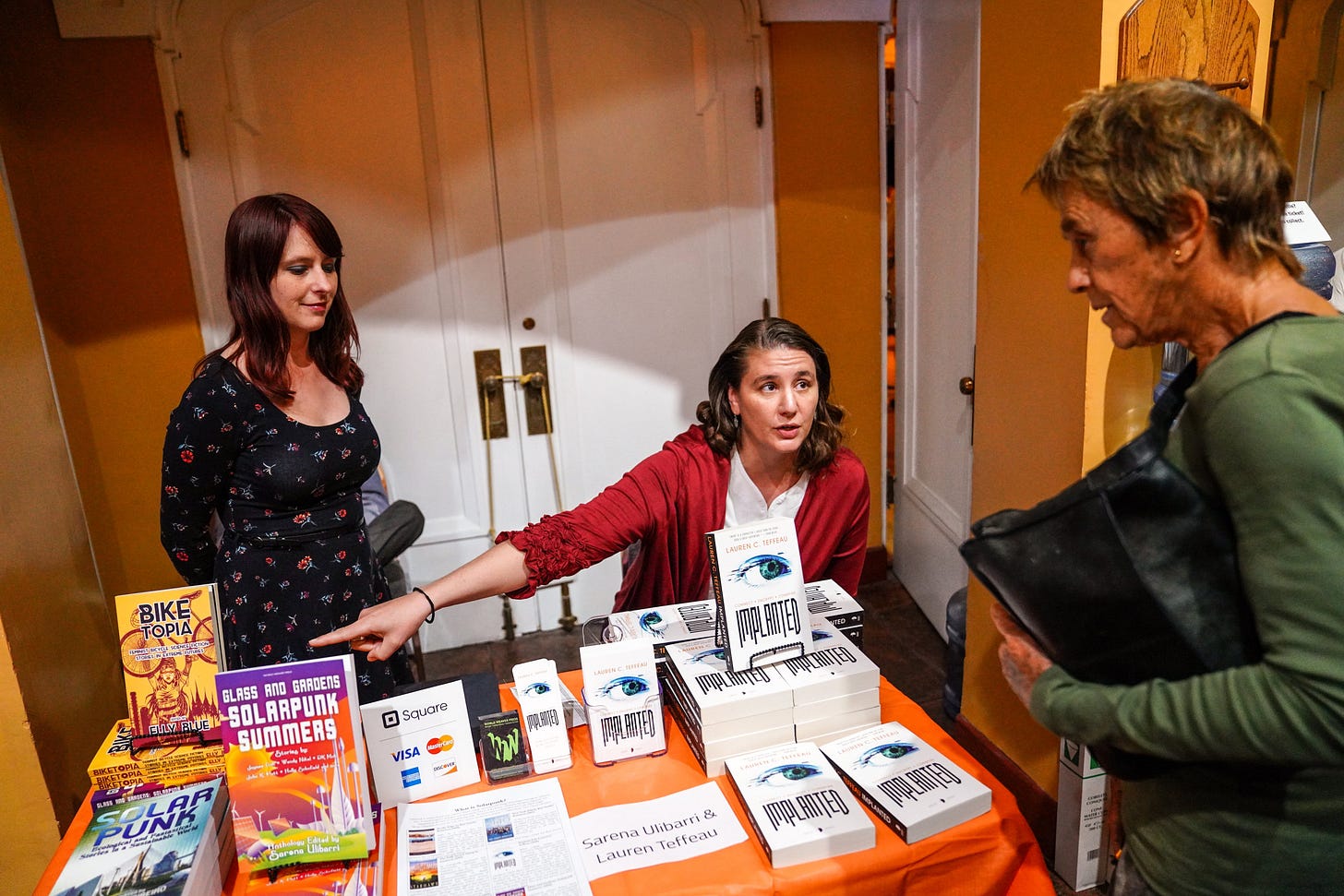
Find out more about Another Life and A Hunger with No Name.
Lauren C. Teffeau was born and raised on the East Coast, educated in the South, employed in the Midwest, and now lives and dreams in the Southwest. Her environmental fantasy A Hunger with No Name releases September 2024 with the University of Tampa Press. Her novel Implanted (Angry Robot) was shortlisted for the 2019 Compton Crook award for best first SF/F/H novel and named a definitive work of climate fiction by Grist. She has published over twenty short stories in speculative fiction magazines and anthologies including the Sunday Morning Transport, DreamForge Magazine, multiple anthologies with Flame Tree Press, and the Bram Stoker-nominated Chromophobia: A Strangehouse Anthology by Women in Horror.
Sarena Ulibarri lives, writes, and plants trees in the American Southwest. She is the author of two novellas (Another Life from Stelliform Press and Steel Tree from Android Press) as well as nearly 50 short stories. This year, she has stories appearing in the anthologies Strange Locations: An Anthology of Dark Travel Guides (from Apex) and Solarpunk: Short Stories From Many Futures (from Flame Tree Press), and in the magazine Baubles From Bones. She is editor-in-chief of World Weaver Press, and a story reviewer and climate fiction editor for Grist Magazine's annual contest Imagine 2200.
Story Ideas and Resources for Writers
Green Stories has a list of resources for writers on their website. Just as some books/films product place products, we aim to ‘product place’ sustainable attitudes behaviours products and policies. The story doesn’t have to be specifically about climate change or catastrophic shortages, it can be any kind of genre – rom-com, crime drama, legal drama, children’s book, sci-fi etc. as long as it showcases sustainable technologies, practices, products or ideas in the background.
Below is an example of one of their guides, about the Well-Being Index:
The idea is to replace the GDP index which measures our Gross Domestic Product with a Well-Being Index. Some say that when governments are judged on metrics like the GDP, which are based on consumption this does little to promote more sustainable policies that benefit people. For example GDP increases when there are disasters as more resources are used. It is argued that measuring well-being instead would allow governments to be judged on broader criteria which will lead to more sustainable policies. David Cameron considered this idea in 2010 – https://www.theguardian.com/politics/2010/nov/14/david-cameron-wellbeing-inquiry
There is a great article that discusses the revolutionary impact of switching our metrics from GDP to well-being in positive news
Articles
http://www.oecdbetterlifeindex.org/
http://www.oecdbetterlifeindex.org/responses/
http://ec.europa.eu/environment/beyond_gdp/download/factsheets/bgdp-ve-ssi.pdf
Story ideas
Perhaps you could write a story about the implementation of the idea of a well-being/happiness index from the perspective of a government minister e.g. why he/she thought it was a good idea, what difficulties he/she faced getting it through. David Cameron had a similar idea https://www.gov.uk/government/speeches/pm-speech-on-wellbeing but then the media accused him of trying to distract the people from economic recession by changing the metrics, so he didn’t see it through. To make it a good story you would have to focus on the characters and the obstacles they overcome so it doesn’t become too detailed and boring.
Indirectly
Imagine how changing from measuring success by production (GDP) to measuring success by measures of well-being such as happiness, biodiversity, climate change, health, suicides etc. would affect the kinds of policies that governments would pursue. Then think of who that might affect and how. You can construct a story around characters who are affected by these policy changes. If success was measured by how happy people are rather than just production or economic factors, the government would be very concerned to ensure statistics on things like depression and suicides kept going down.
In background
Here your story can be about anything you like but you can indirectly showcase this idea for example by a character hearing news broadcasts or the radio relating to responses to changes in the Happiness Index. But to make it work you’d have to tie it in to the plot or the dialogue in some way so it doesn’t seem random and jarring.
Explore their other pages on Personal Carbon Allowances, Sustainable food and more.

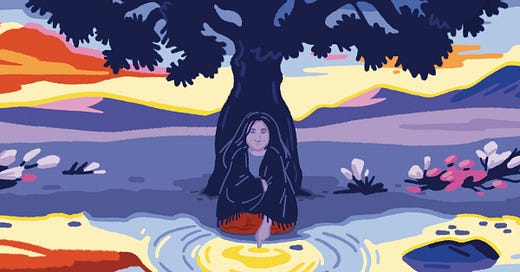


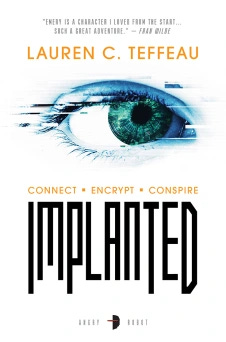

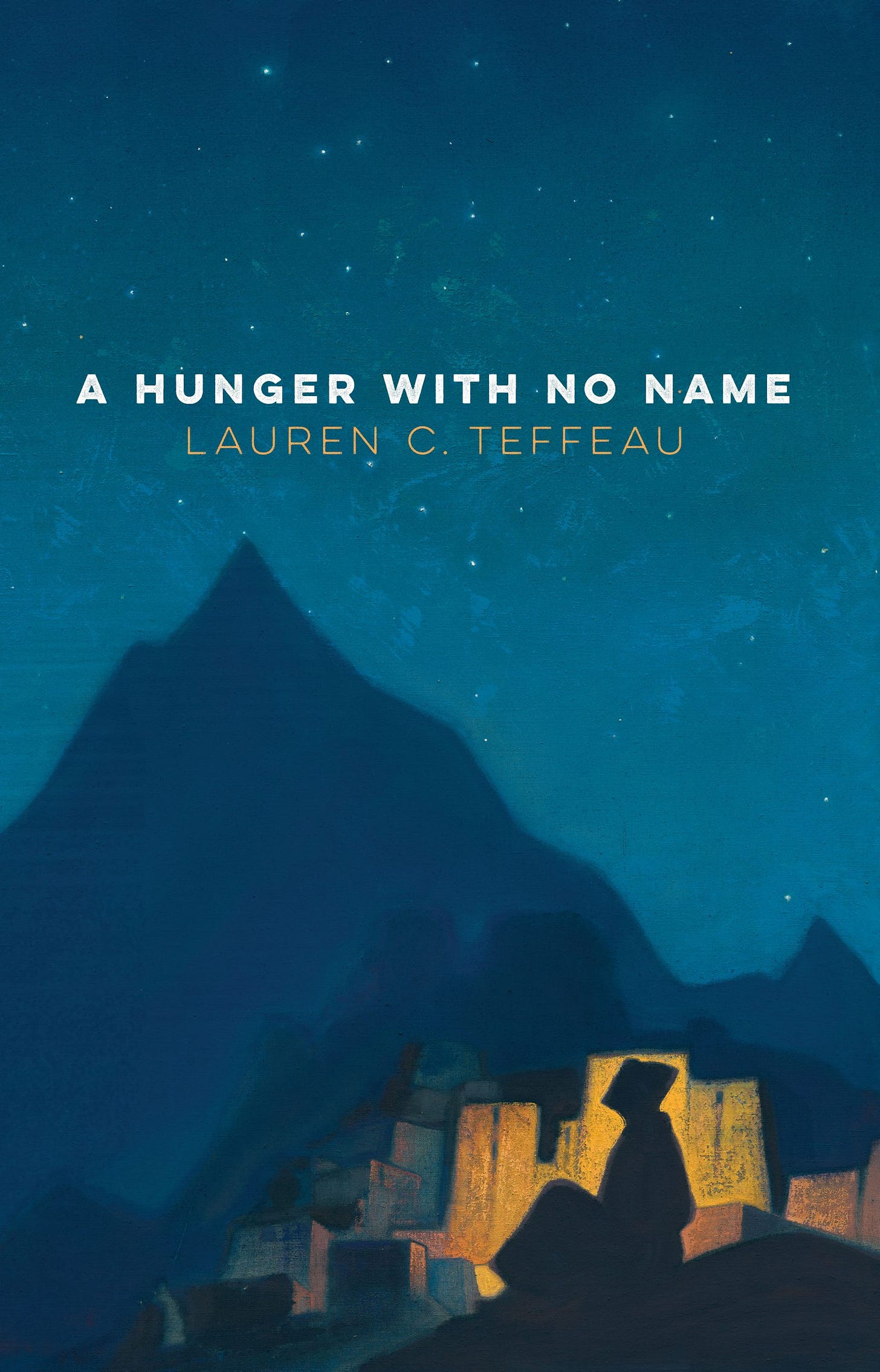
Thanks for sharing this conversation! There are ideas and concepts here I'd never considered, and I always enjoy learning about other authors' ideas, work, and processes.